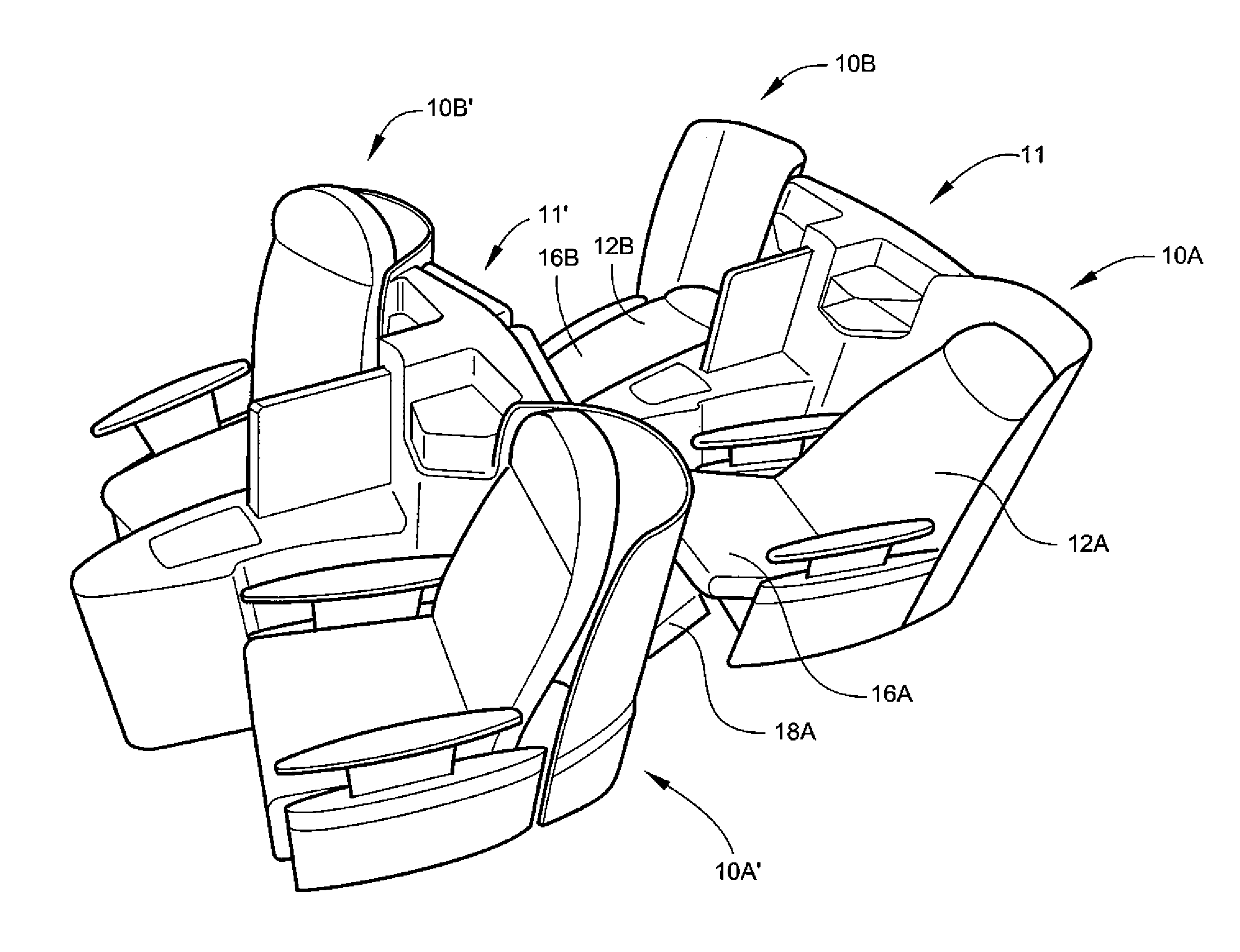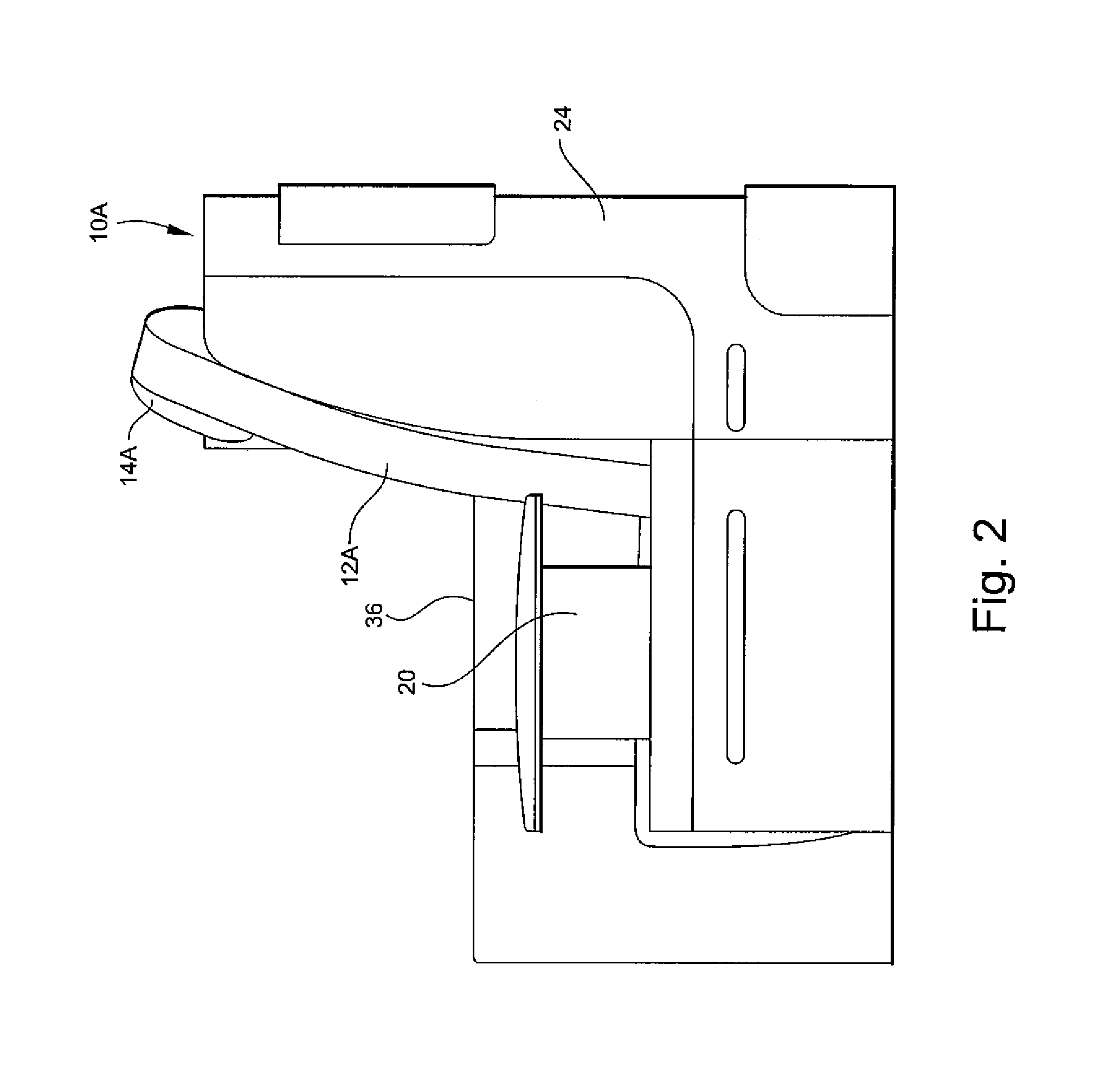Passenger seating arrangement
a seating arrangement and passenger technology, applied in the field of passenger seating, can solve the problem of consuming a large amount of space in the aircraft cabin of prior art sleeper-type seats
- Summary
- Abstract
- Description
- Claims
- Application Information
AI Technical Summary
Benefits of technology
Problems solved by technology
Method used
Image
Examples
Embodiment Construction
[0039]Referring to the drawings wherein identical reference numerals denote the same elements throughout the various views, FIGS. 1-7 illustrate a group of passenger seat units 10 which are arranged in seat pairs 11 each having first and second mirror-image oriented seat units 10A and 10B with a center unit 13 disposed therebetween. The seat units 10 are substantially identical to each other, and include seat backs 12A, 12B (the upper portions of which define separate or integral headrests 14A, 14B) seat bottoms 16A, 16B, leg rests 18A, 18B, and spaced-apart arm rests 20, which may be movable between an “up” or “extended” position and a “down” or “retracted” position. The seat units 10 are supported by frames which are in turn mounted to the deck of the aircraft by track fittings of a known type.
[0040]Privacy shells 24 are provided which enclose the back and sides of the seat backs 12. The privacy shells 24 are configured to permit the occupant to see over and around the shells 24 w...
PUM
 Login to View More
Login to View More Abstract
Description
Claims
Application Information
 Login to View More
Login to View More - R&D
- Intellectual Property
- Life Sciences
- Materials
- Tech Scout
- Unparalleled Data Quality
- Higher Quality Content
- 60% Fewer Hallucinations
Browse by: Latest US Patents, China's latest patents, Technical Efficacy Thesaurus, Application Domain, Technology Topic, Popular Technical Reports.
© 2025 PatSnap. All rights reserved.Legal|Privacy policy|Modern Slavery Act Transparency Statement|Sitemap|About US| Contact US: help@patsnap.com



